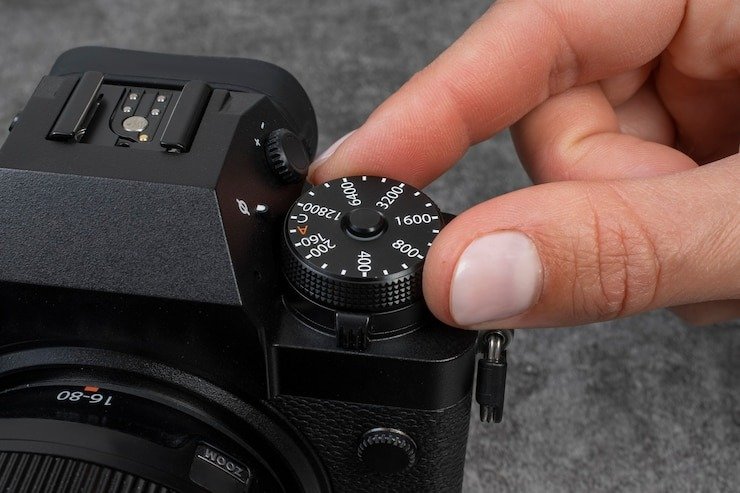Difference Between Flash Coupler D and L for F1: A Comprehensive Guide
The Canon F1, a 35mm film SLR camera introduced in 1971, became popular among professional photographers due to its robust build and versatile accessories. Among its notable features are the flash couplers designed to enhance flash photography capabilities. The three central flash couplers available for the F1 system are the Flash Coupler D, Flash Coupler L, and Flash Coupler F. While each serves a unique purpose, choosing the right one for your needs can significantly impact your photography experience.
In this article, we will delve into the specifics of each flash coupler, focusing on the Flash Coupler D and L, their distinct features, use cases, and which might be best suited for various photography scenarios.
What are Flash Couplers?
Flash couplers are accessories that attach to the top of the camera, providing an additional hot shoe or improving the camera’s flash synchronization capabilities. For the Canon F1, these couplers are essential for photographers who frequently use external flash units.
Flash Coupler D: The Simplest Solution
The Flash Coupler D is the most basic of the three couplers. It provides a straightforward hot shoe, enabling the attachment of a flash unit directly to the camera body. This coupler is ideal for photographers who need a quick and straightforward solution for flash photography without any additional features.
Features of Flash Coupler D:
- Basic Hot Shoe: Allows for easy attachment of flash units.
- Simple Design: No additional features or controls, making it lightweight and easy to use.
- Compatibility: Works well with most basic flash units designed for the F1 system.
The Flash Coupler D is perfect for those who do not need complex features but want to attach a flash unit quickly. It’s a no-frills option that effectively serves its purpose.
Flash Coupler L: Enhanced Functionality
The Flash Coupler L takes things further by adding a locking mechanism and an illumination light, making it a more versatile option than the Flash Coupler D.
Features of Flash Coupler L:
- Locking Mechanism: Secures the flash unit firmly to the camera, preventing accidental detachment.
- Illumination Light: A small light illuminates the meter needle in the viewfinder, allowing for better visibility in low-light conditions.
- Enhanced Stability: The locking mechanism ensures the flash stays in place, even during rigorous shooting.
This coupler is handy for photographers who often shoot in challenging environments, such as low-light or fast-paced situations where secure attachment and visibility are crucial.
Flash Coupler F: The Uncommon Companion
While the Flash Coupler F is less commonly discussed, it is still worth mentioning. This coupler offers additional functionality similar to the L but includes different contact arrangements, making it compatible with specific flash units.
Features of Flash Coupler F:
- Unique Contact Configuration: Compatible with specific Canon flash units that require this configuration.
- Versatile Use: Suitable for advanced users who need this particular contact arrangement for their flash units.
Although less common, the Flash Coupler F might be necessary for photographers using specific equipment combinations.
Understanding Flash Sync Speed
The flash synchronization speed of a camera is the fastest shutter speed at which the camera can synchronize with an external flash. For the Canon F1 and the New F-1, the flash sync speed is 1/90 second. This means that the shutter speed should not exceed 1/90 second when using a flash to avoid partial exposures or shadowing effects.
Why is Flash Sync Speed Important?
Using a shutter speed faster than the sync speed can result in only part of the image being illuminated by the flash. This occurs because the shutter may not open fully when the flash fires. Staying within the sync speed ensures the entire frame is exposed correctly.
Canon F1 Flash Sync Speed: 1/90 Second
This is a standard sync speed for cameras of this era, providing enough flexibility for most flash photography needs. Additional techniques or equipment may be necessary for fast-moving subjects or high-speed photography.
Comparing Flash Coupler D and L
When deciding between the Flash Coupler D and L, consider your specific needs and shooting conditions.
Scenario 1: Basic Indoor Photography
The Flash Coupler D is sufficient for basic indoor photography, where lighting is relatively stable, and you don’t need additional features. It provides a hot shoe for your flash unit, allowing you to enhance your lighting without any additional complexities.
Scenario 2: Low-Light Situations
The Flash Coupler L is the better choice in low-light conditions, such as nighttime events or dimly lit environments. The illumination light helps you see the meter needle in the viewfinder, making it easier to adjust your settings. Additionally, the locking mechanism ensures that your flash unit remains secure.
Scenario 3: Rigorous Shooting Conditions
If you shoot in fast-paced or rigorous conditions where the camera and flash may be jostled, the Flash Coupler L’s locking mechanism provides added security. This prevents the flash from detaching accidentally, ensuring you can focus on capturing the moment without worrying about your equipment.
Choosing the Right Flash Coupler for Your Needs
Your specific photography needs should guide your choice between the Flash Coupler D and L:
- Choose Flash Coupler D if:
- It would help if you had a simple and lightweight solution.
- You do not shoot frequently in low-light conditions.
- You prefer a minimal setup without additional features.
- Choose Flash Coupler L if:
- You often shoot in low-light conditions and need the meter needle illumination.
- You require a secure locking mechanism for your flash unit.
- You want additional stability and functionality.
Final Thoughts
Understanding the differences between Flash Coupler D and L can significantly impact your photography experience. While the Flash Coupler D is perfect for basic setups, the Flash Coupler L offers additional features that can be crucial in challenging environments.
Choosing the suitable coupler depends on your specific shooting needs and conditions. The Flash Coupler L is an excellent choice for those who frequently shoot in low-light or fast-paced environments. However, the Flash Coupler D offers a convenient and lightweight solution for more straightforward applications.
Frequently Asked Questions (FAQs)
Q1: Can I use a modern flash with the Canon F1 using these couplers?
A1: These couplers can be used with modern flashes and the Canon F1. However, you may need additional adapters or settings adjustments to ensure compatibility and prevent damage to the camera or flash.
Q2: What is the advantage of the locking mechanism in the Flash Coupler L?
A2: The locking mechanism in the Flash Coupler L prevents the flash unit from detaching accidentally, providing added security during rigorous shooting conditions.
Q3: Is the Flash Coupler F necessary for most photographers?
A3: The Flash Coupler F is less commonly needed and is primarily for photographers using specific Canon flash units requiring its unique contact configuration.
Q4: Can I use these flash couplers with other Canon cameras?
A4: These flash couplers are specifically designed for the Canon F1 system. While they may physically fit on other cameras, their functionality may be limited.
Q5: How does the illumination light in the Flash Coupler L work?
A5: The illumination light in the Flash Coupler L lights up the meter needle in the viewfinder, making it easier to see and adjust settings in low-light conditions.
Choosing the suitable flash coupler allows you to elevate your flash photography and make the most of your Canon F1 camera system. Whether you need the simplicity of the Flash Coupler D or the advanced features of the Flash Coupler L, understanding their differences is critical to achieving the best results.
Why You Need Must Read These Articles:




